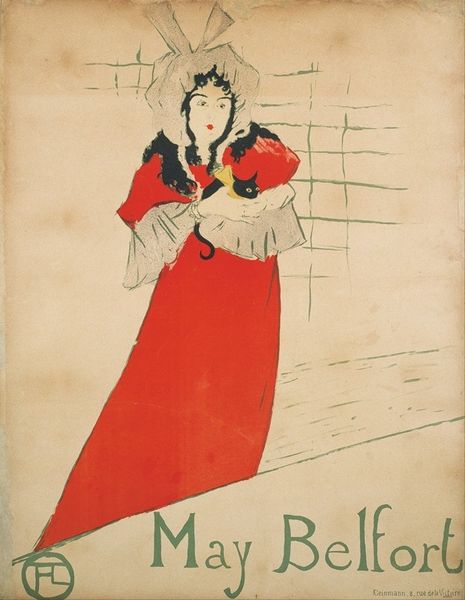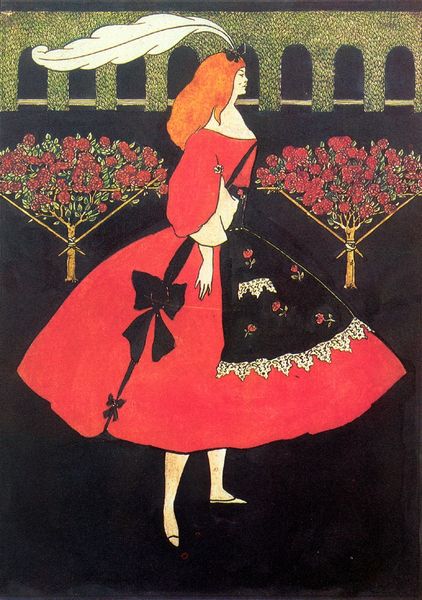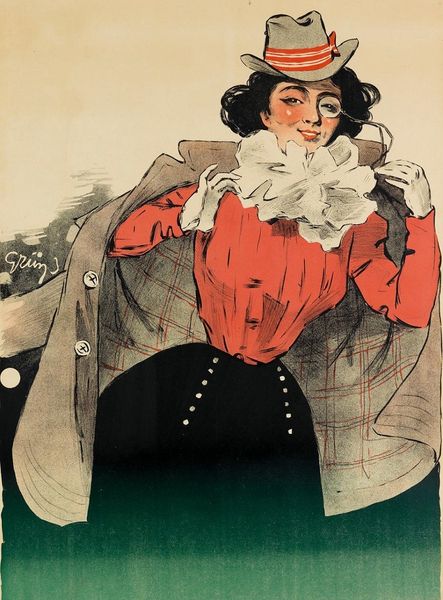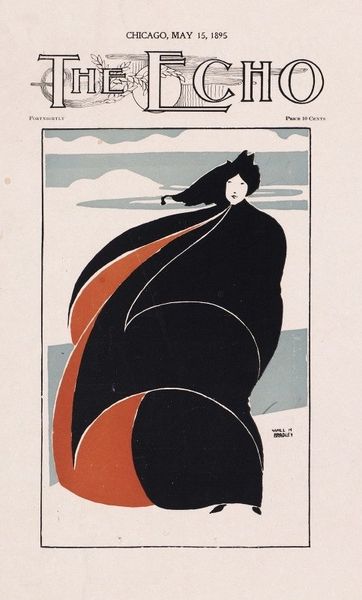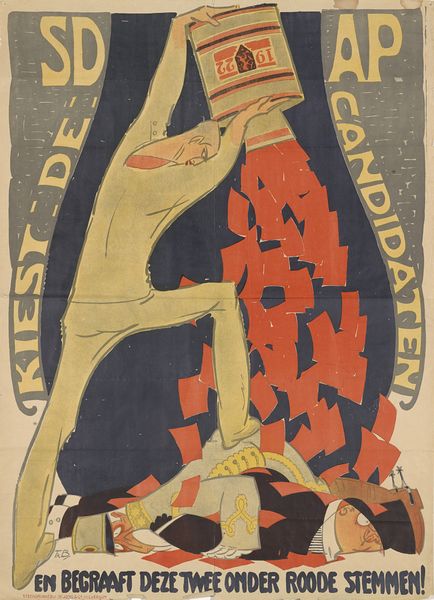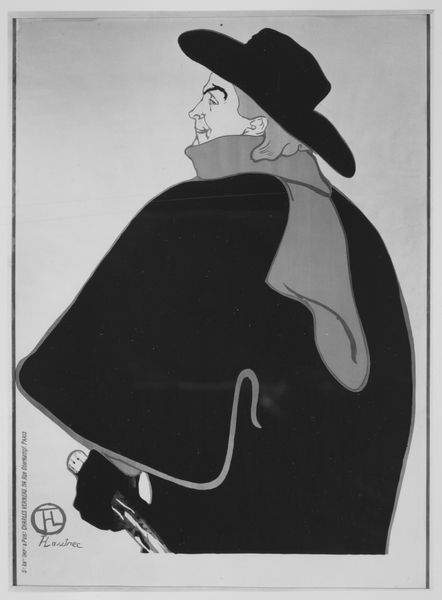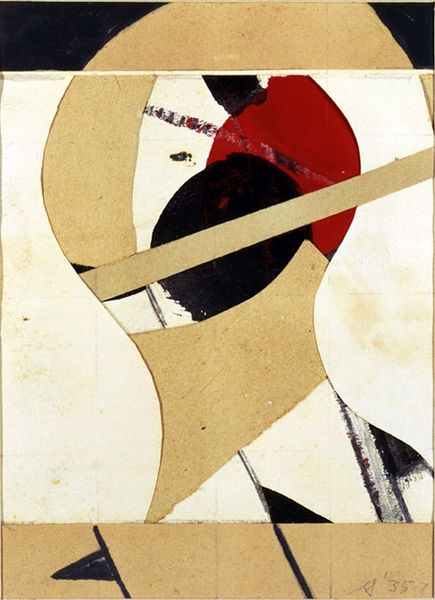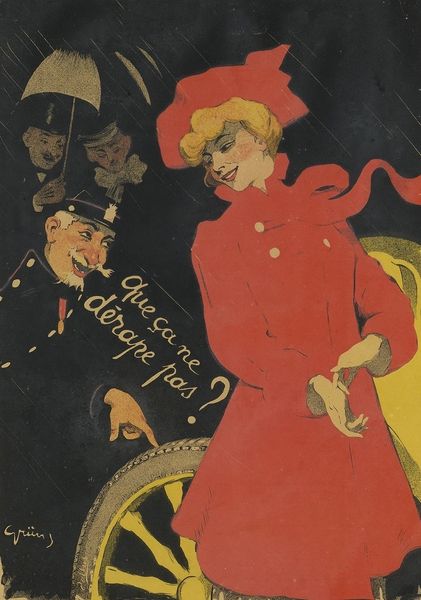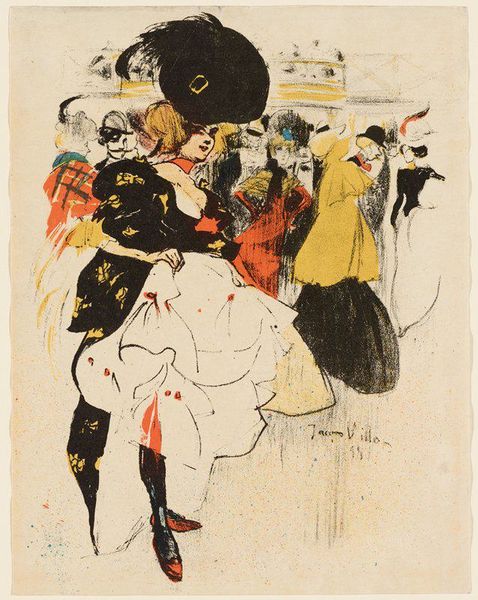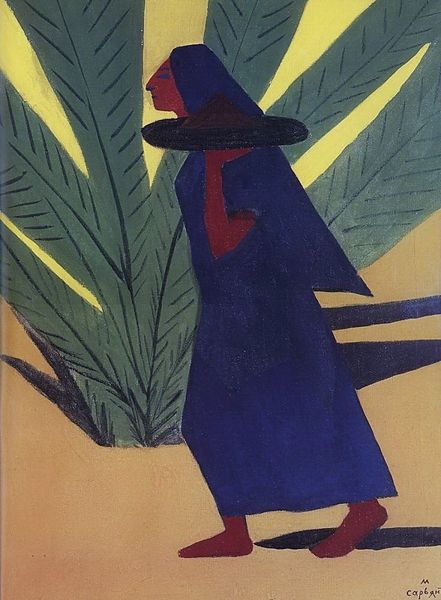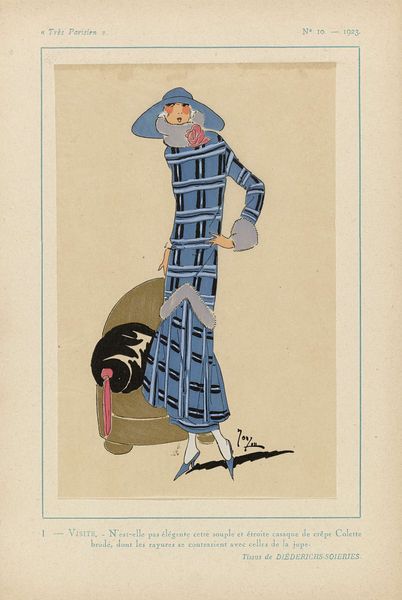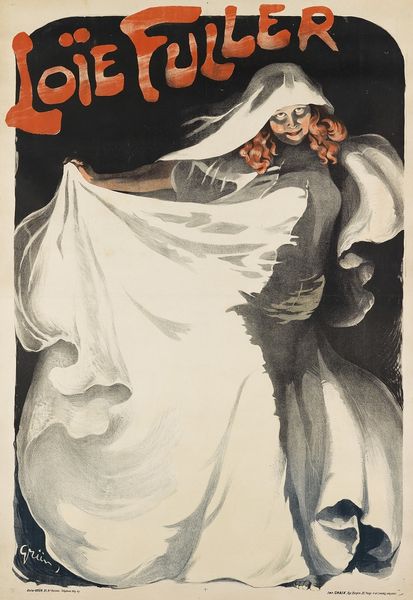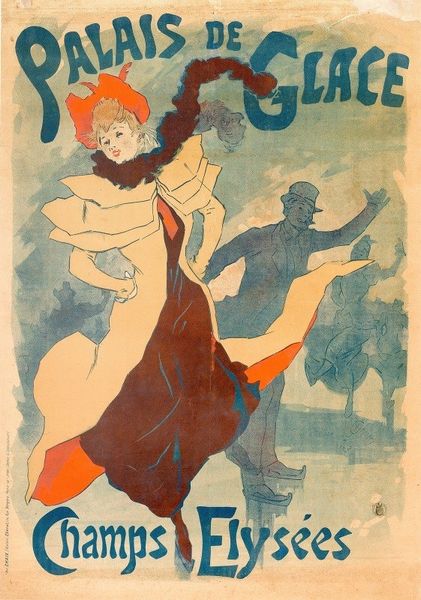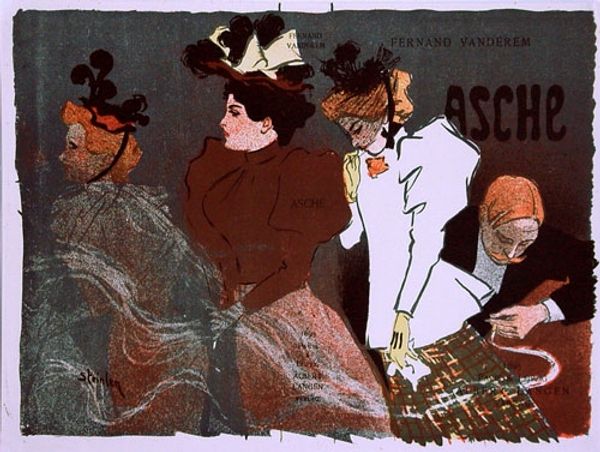
Aristide Bruant in his cabaret 1892
henridetoulouselautrec
San Diego Museum of Art, San Diego, CA, US
Copyright: Public domain
Henri de Toulouse-Lautrec’s lithograph captures Aristide Bruant, the cabaret singer, defined by his broad-brimmed hat and scarlet scarf. This attire was not merely fashion; it was a carefully constructed persona. Consider the red scarf; beyond its immediate visual impact, its roots reach far back. Red, the color of blood, fire, and passion, has been a recurring emblem across cultures. It signifies revolution, and in this case, Bruant's rebellious spirit as a performer who challenged social norms. The hat, too, carries its own weight. A symbol of authority and identity, it conceals and reveals simultaneously. Echoes of this motif resonate in portraits throughout history, where headwear signifies status, profession, or affiliation. The hat and scarf, in their stark simplicity, work upon our subconscious, evoking feelings of defiance. These are archetypes that tap into our collective memory, stirring emotions tied to rebellion. Observe how these symbols recur, transmuted yet recognizable, reminding us that history is not linear but a cyclical dance of recurring themes, each iteration colored by its unique time and place.
Comments
No comments
Be the first to comment and join the conversation on the ultimate creative platform.
